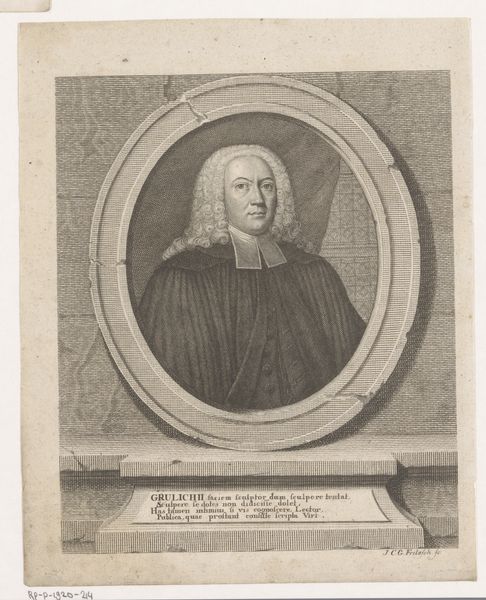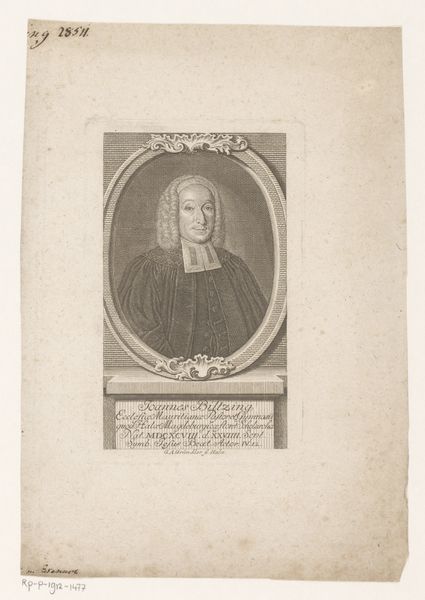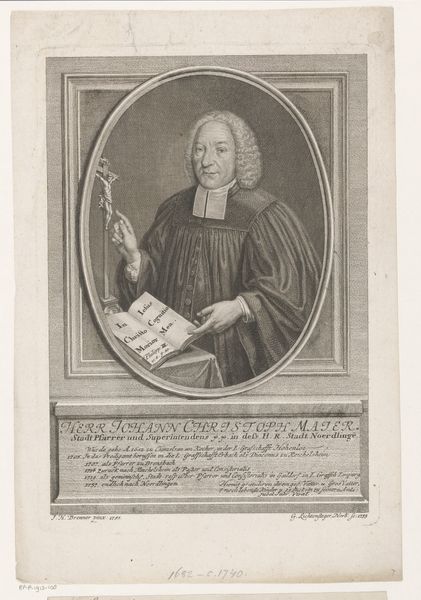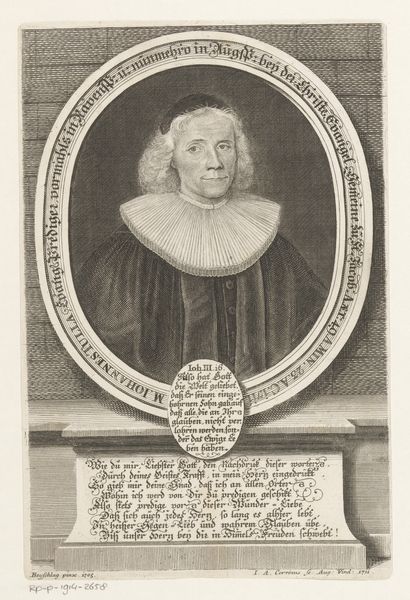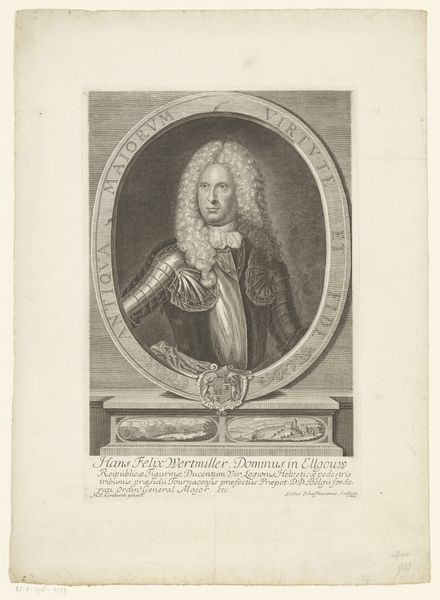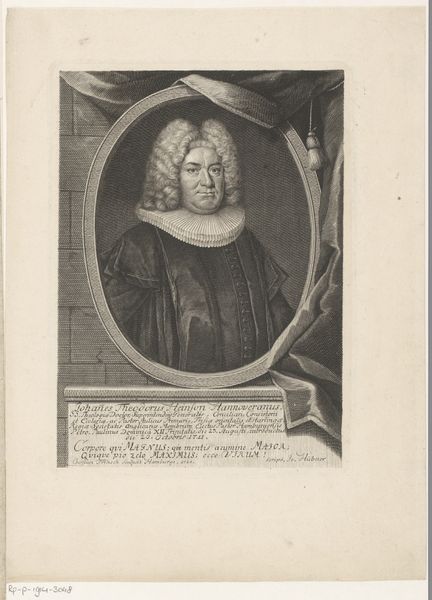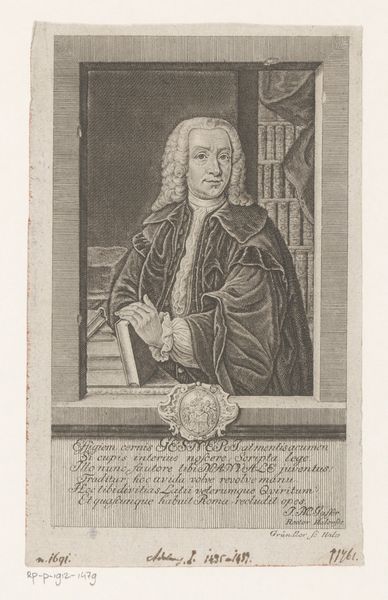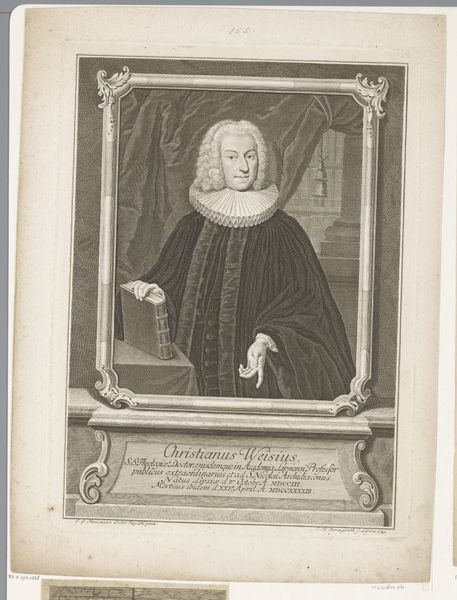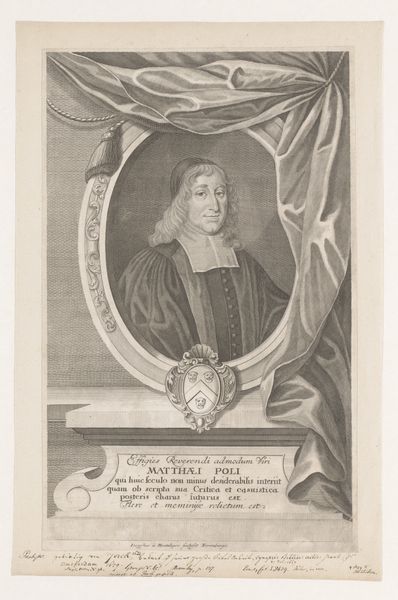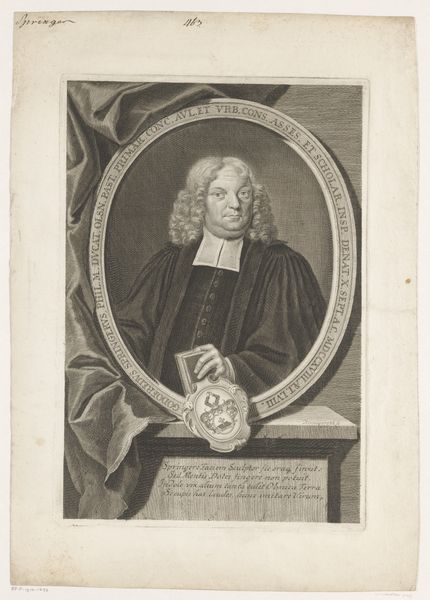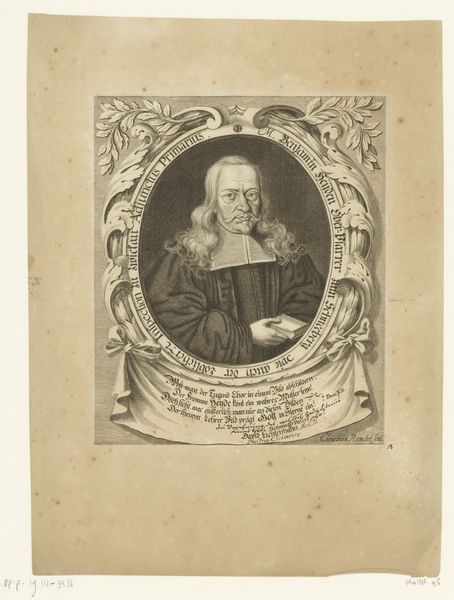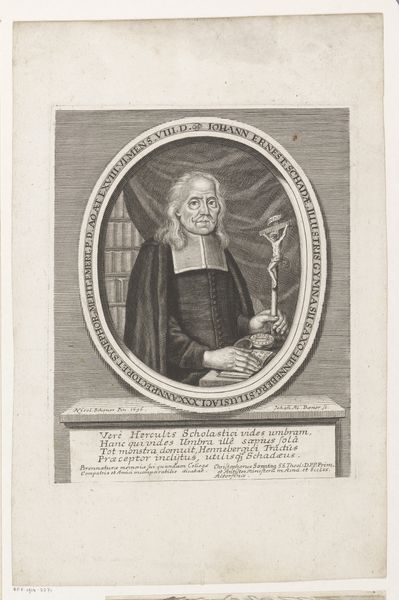
engraving
#
portrait
#
baroque
#
history-painting
#
engraving
Dimensions: height 294 mm, width 193 mm
Copyright: Rijks Museum: Open Domain
Curator: This is a portrait of Johann Heinrich Thamer, an engraving dating from between 1665 and 1721. The piece is by Christian Romstet. Editor: It has quite the stern air, doesn’t it? The oval frame, the heavy curtain, all draw our eye right to the subject's pointed finger as if directing our judgement. Curator: Yes, Romstet very deliberately employs the aesthetics of the baroque period to project authority. Consider the placement of the inscription and heraldic shield beneath Thamer. It elevates his position within society. Editor: The symbolic language here speaks volumes. The seemingly severe clothing also adds another layer, doesn't it? Its austerity perhaps suggesting devotion. And he has such piercing, watchful eyes. I wonder, what kind of cultural impact did images like this have at the time? Curator: Engravings such as this served as potent instruments for solidifying status and disseminating information, even propaganda. This portrait would have circulated among Thamer's peers and followers. The history recorded there shows what value was placed upon lineage. Editor: Absolutely. We are so immersed in immediate gratification today that it's a potent reminder to examine how deeply humans seek to memorialize themselves. How they craft that memory visually is, perhaps, the key to its persistence. Curator: And in an age before photography, commissioned portraiture was how the wealthy preserved their image, controlling their legacy. Editor: Right, images have a long, intricate past to carry. A somber, but powerful notion. Curator: Indeed. Reflecting on it gives one pause about the modern thirst for constant self-documentation, and its long-term impacts.
Comments
No comments
Be the first to comment and join the conversation on the ultimate creative platform.

